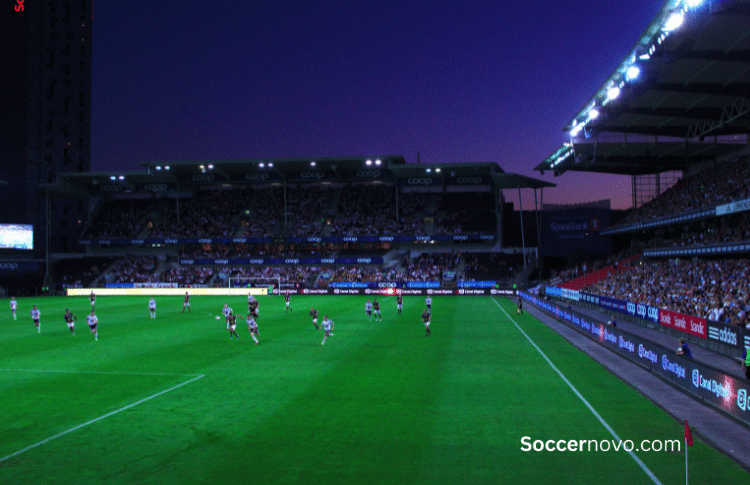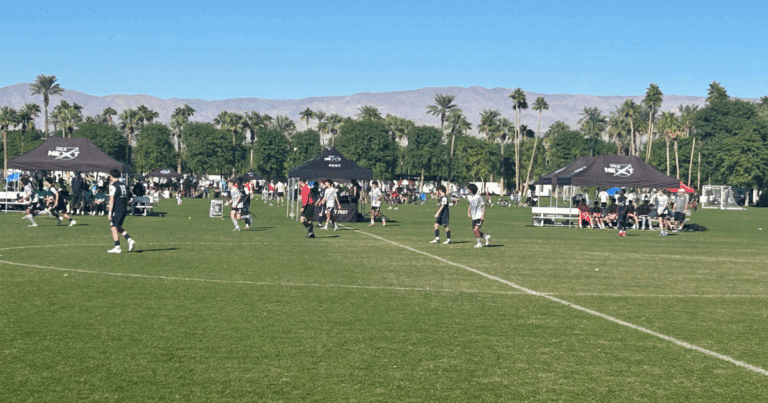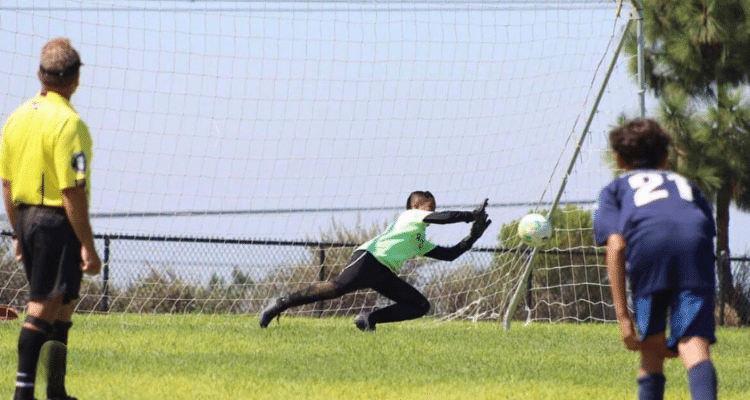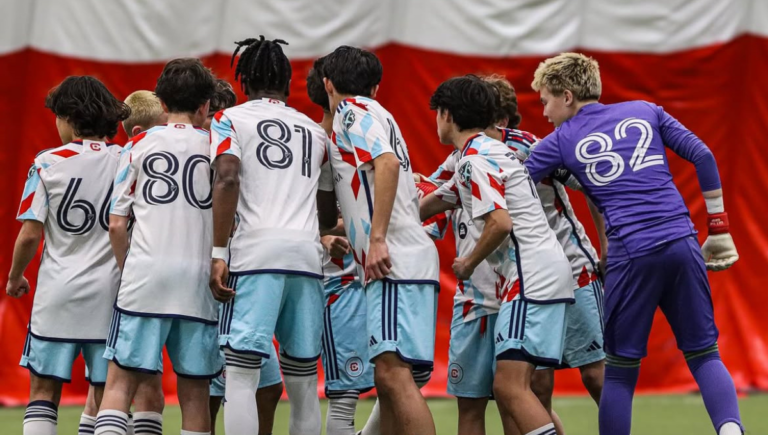How to Be a Better Fullback in Soccer

Fullbacks are defenders on a soccer team that play an important role in the success the game.
They are responsible for defending their own goal and igniting their team’s attack. Becoming a better fullback requires a combination of physical, technical, and mental skills.
One of the most important skills for a fullback is the ability to read the game well. By consistently scanning the field and anticipating the opponent’s movements, a fullback can position themselves to intercept passes and make crucial tackles.
Great communication with the rest of the team is also crucial, as it allows the fullback to coordinate their movements with the rest of the defense.
Fullbacks must be able to pass and control the ball with both feet, as well as have good dribbling skills to get out of tight spaces.
What is a Fullback in Soccer?
In its simplest terms, a fullback is a defensive player whose primary responsibility is to defend against the opposing team’s attackers and prevent them from scoring goals.
Fullbacks typically play on the left and right sides of the backline, and they are responsible for marking and tackling opposing attackers, intercepting passes, and clearing the ball away from their own goal.
They may also be involved in the team’s offensive play by overlapping with the midfielders and delivering crosses into the box.
Mastering the Basics
Before a fullback can become a great player, they must first identify and master the basics of the position.
This means developing a solid foundation of defensive positioning, tackling techniques, and passing accuracy.
Essentially, a fullback needs to have proper mechanics and fundamentals to succeed. We’ll address each below.
Disciplined Defensive Positioning
A fullback must be able to anticipate the movements of the opposing team and position themselves accordingly.
This means staying between the opposing player and the goal, while also being aware of the other players on the field.
It is important for fullbacks to maintain a good distance from the opposing player, while also being close enough to make a tackle if necessary. This requires quick reflexes and good decision-making skills.
Proper Tackling Techniques
Tackling is a crucial part of playing fullback. A solid, clean tackle can prevent the opposing team from scoring, while a bad tackle can result in a penalty or even a red card.
Fullbacks must learn a variety of tackling techniques, including the slide tackle, standing tackle, and block tackle. They must also be able to time their tackles correctly in order to avoid fouls.
Similarly to tackling, a fullback needs to know how to use their shoulders when shielding and tackling. By leveraging their shoulder, soccer players can legally bounce players off the ball.
Passing Accuracy
Fullbacks are often responsible for starting the attack by passing the ball to their teammates. This means they must have good passing accuracy and be able to make quick decisions under pressure.
Fullbacks must be able to pass accurately with both feet, as they may need to switch sides of the field quickly. They must also be able to read the field and make the right pass at the right time.
Improving Your Game
There’s always ways to become a better player, no matter what position you play. Here are some tips specifically for fullbacks who want to improve their game in training and matches.
Tip-top Physical Fitness
Fullbacks need to be in excellent physical condition to perform at their best on the field.
This includes building strength, endurance, and flexibility through regular exercise and strength training.
A balanced training program should include exercises that target the core, legs, and upper body, as well as cardiovascular workouts to improve overall fitness and stamina.
Soccer players, in general, can really benefit from doing other sports and activities such as yoga. By working different muscle groups, athletes can mitigate and prevent common soccer injuries from happening.
Speed and Agility Training
A fullback that is quick and agile has an advantage. They are able to track offensive players down and make runs into passing gaps for their teammates.
Incorporating speed and agility training into their routine can help players improve their footwork, reaction time, and overall speed.
Drills such as ladder drills, cone drills, and shuttle runs can help players improve their agility and quickness.
Plyometric exercises, such as jumping and bounding, can also help improve explosive power and speed.
Clear Communication Skills
Effective communication is essential for fullbacks to work cohesively with their teammates on the field.
Clear and concise communication can help players coordinate defensive strategies, anticipate plays, and make split-second decisions.
Players should practice communicating with their teammates during training sessions and games.
This also includes using verbal cues, such as calling out positions and instructions, as well as nonverbal cues, such as hand signals and body language.
When a defense is on the same page, it becomes much harder to penetrate.
Creating Scoring Opportunities
Fullbacks can also play a crucial role on the offensive end of the field.
They can put themselves in a position to create more scoring opportunities for their team.
One way to do this is to make overlapping runs. Overlapping runs involve the fullback running past the winger and into the attacking third. This can create confusion for the opposition’s defense and open up space for the fullback to cross the ball into the box or take a shot on goal. Another way to create scoring opportunities is to take advantage of set pieces. Fullbacks can position themselves strategically during corner kicks and free kicks to receive the ball and make a dangerous cross or shot on goal.
Best Fullbacks in the World
Here are some world-class fullbacks that players can emulate their game towards.
- Trent Alexander-Arnold (Liverpool): currently plays as a right-back for Liverpool and the England national team. He is known for his exceptional crossing ability and has been dubbed the “assist king” due to the number of assists he has provided for his team.
- Andrew Robertson (Liverpool): currently plays as a left-back for Liverpool and the Scotland national team. Robertson is known for his tireless work rate and his ability to make key tackles. He is also a potent attacking threat, with his overlapping runs and pinpoint crosses contributing to Liverpool’s attacking play
- Kyle Walker (Manchester City): currently plays as a right-back for Manchester City and the England national team. Walker is known for his pace, power, and defensive capabilities.
- Jordi Alba (FC Barcelona): currently plays as a left-back for Barcelona and the Spain national team. Alba is a highly skilled fullback known for his attacking prowess. He has been a key player for Barcelona for many years and has won numerous titles with the team.
- Achraf Hakimi (PSG): currently plays as a right-back or wing-back for Paris Saint-Germain on loan from Inter Milan and the Morocco national team. Hakimi is known for his exceptional speed, dribbling skills, and attacking mentality. He is also an excellent defender with the unique ability to play on both sides of the field.
If you have a chance to watch these players on TV, you should. Study their positioning, movement and the way they play the game. By emulating their style, it will make you a better fullback.
Conclusion
There’s no doubt that a fullback is an important position in soccer. From the important tackles to the run up the field on the wings, a fullback can make a significant impact on a match.
Becoming a successful fullback in soccer requires a combination of physical skills and mentality as well as a strong work ethic.
Players must have the stamina and endurance to run up and down the field for the entire game, as well as the strength and agility to defend against opposing players.
Patience and discipline are key elements in becoming an effective fullback. Consistent practice and repetition of skills are necessary to make them second nature.
Some specific strategies for successful fullback play include standing players up when they are dribbling, front foot tackles, being strong in 50/50 balls, and tracking runners behind them.
Fullbacks should also be able to switch the play with crossfield balls, play line-breaking passes, and help advance the ball into the final third.
With consistent practice and a focus on improving both physical and mental skills, players can become successful in this demanding position!
I hope this article was helpful. If you want to learn more about other soccer positions, head over to ‘Soccer Positions: The Ultimate Guide’.

Written By: SoccerNovo
SoccerNovo is an independent youth soccer media brand built to help parents, players, and coaches better understand the game and the pathways available in U.S. soccer. Our mission is to make youth soccer simpler, clearer, and more accessible for everyone involved in it.
Let’s connect






